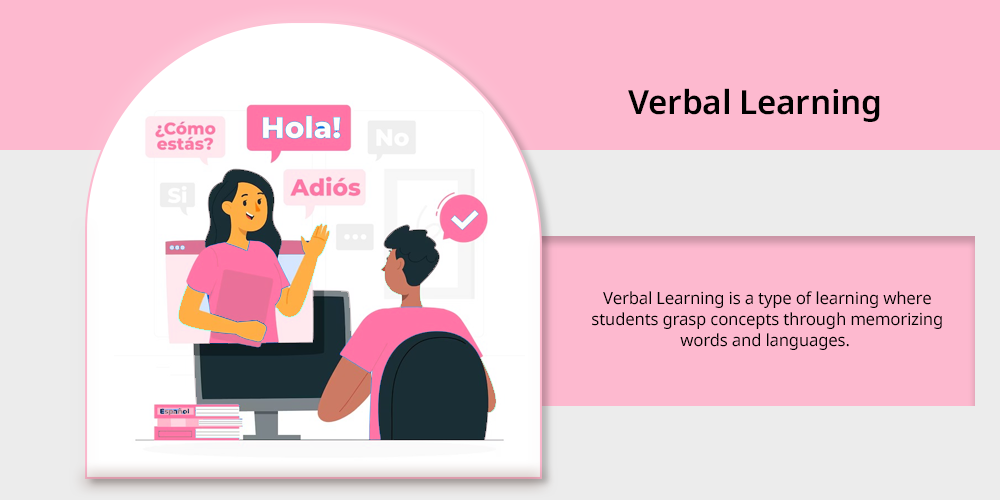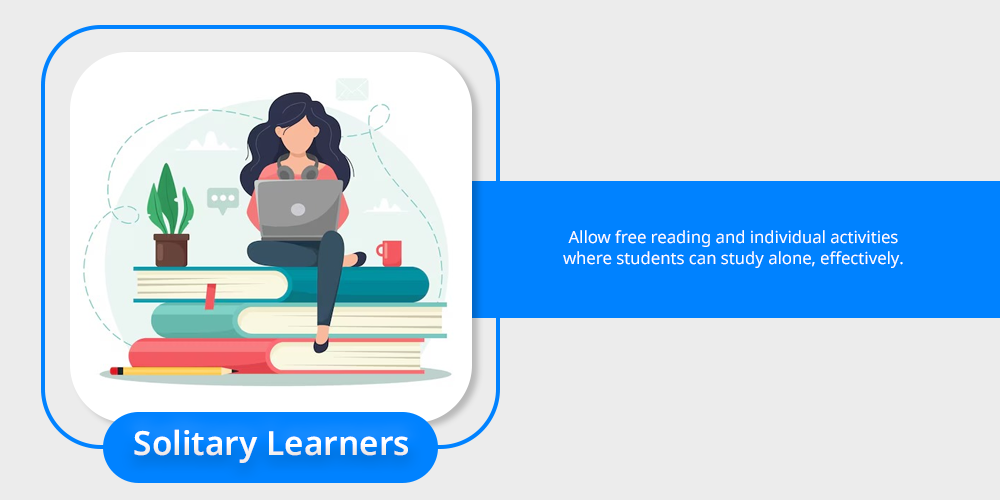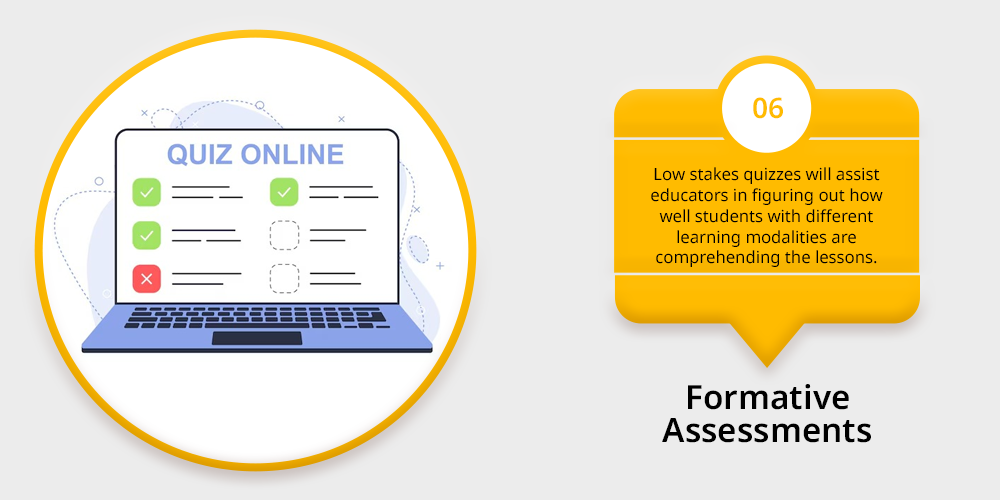
Have you ever wondered why some students excel with hands-on activities while managing their classes whereas some students find reading and listening helpful?
The answer is easy here and it is because of the variety of approaches to learning each individual prefers. It is essential to know different learning styles; this can commonly enhance the success of a student, especially in an online education environment.
In this blog, we will focus on four main types of learning in education, other learning styles beyond the basics, and strategies to support these various approaches, especially in an online setting.
At the end of this topic, you will be able to comprehend how education needs to be delivered in ways that will address the learner’s needs.
Table of Contents
What Are the Main Four Types of Learning Methods?

Learning professionals have normally recognized four fundamental forms of learning that aim at serving four distinct styles through which people learn. These learning styles are:
1. Visual Learning

Visual learners love information that they can look at. Utilising Visual Aids helps students grasp meaning in a concept that allows them to identify relationships, procedures, and aspects.
Such forms of content as charts, diagrams, videos, and others are used to make them understand a given topic and even make them remember it.
This sort of learner thrives best when he or she is faced with accommodating information that is well organised, easy to follow and well illustrated.
2. Auditory Learning

The students who fall under this category learn better through listening to the content being taught.
They rely on lectures, podcasts, discussions, even background music whenever they are studying helps them in retaining information.
Such learners do grasp conversations and can repeat things that pass through their ears that others cannot notice.
To them, lectures and audios are a compact way of having a subject explained to one’s understanding.
3. Reading/Writing Learning

The reading/writing learner learns better from readable and writable words. They like to read textbooks, take down notes and make lists.
Hearing and speech wise, these learners are very receptive to more traditional ways of learning where the written word is the dominant form of communication. They require time to ponder over what has been taught in a class, so that they can fully understand it.
4. Kinesthetic Learning

People that are under this category, also called tactile learner, learn best through activities like touching and moving.
They like to touch it in one or another way, construct something, try something, act in a certain way.
These learners are physically active and are able to manipulate their environment; they are likely to find formal didactical models where the lecturer is pacing a classroom, inconvenient.
Other Types of Learning Styles

Beyond these four primary learning styles, educators and psychologists recognize additional approaches that can better explain how individuals learn.
1. Logical/Mathematical Learning

Sequential thinkers love, or at least require, logical thinking and processes. Students who are able to learn easily online, are apt to perform better in areas that call for abstract and analytical abilities like mathematics, science and technology.
Hypothetical thinkers are in tune with intricate discussions and like to identify logical interactions.
Read- Develop a Child’s Problem Solving and Analytical Skills to help your kids get this important skill.
2. Social/Interpersonal Learning

Interpersonal learners or social learners have the ability to learn best in interaction processes. They appreciate everything related to group functioning, discussions, as well as learning arrangements.
Social learners appreciate feedback from peers given and they mostly have the capacity to explain complex issues to other learners hence, acting as exemplary group members.
3. Solitary/Intrapersonal Learning

Solitary learners do not wish to learn in a big group setting since they have different learning styles. These learners are independent and reflective and most of them use personalised learning objectives.
Autonomous learners prefer to learn in environments where they can zone themselves out from the rest of the class to work much on content.
4. Naturalistic Learning
Naturalistic learners learn through the environment considering nature as a growing mechanism.
Though they can excel in almost any academic field, they mostly understand what they are taught better when they can watch natural activities, ranging from Biology, environmental science and any academic field that is done outdoors.
Hence, they prefer natural education which connects the things learned at school with real life.
5. Experiential Learning

The process of learning by doing is called experiential learning. Students are more capable of applying classroom theories and knowledge to comprehend real-world scenarios when they receive experiential learning and practical training.
Experiential learning can be achieved in both formal and informal ways, such as community services, internships, teaching and learning processes, research process, etc. Experiential learning enhances self-confidence and leadership skills.
6. Project-Based Learning

Project-based learning is a type of educational method in which students learn by engaging in real-world experiences.
In project-based learning, students learn by doing real-life projects, which allows students to develop knowledge, skills, and take challenges as opportunities. PBL also helps in promoting dynamic education and provides STEAM learning opportunities.
7. Informational Learning Style

Informational learning styles are typical of advanced learning methods. This one is more concerned with the organization and processing of information by the brain rather than the process of receiving the information.
Under the informational learning style, linguistic learners or mathematical learners are considered in the educational contexts.
8. Verbal Learning:

Verbal Learning is a type of learning where students grasp concepts through memorizing words and languages. It includes interpreting and comprehending language in a variety of settings.
People can effectively express themselves, communicate ideas, and understand concepts by honing their verbal communication skills.
Factors that Influence Learning Style

1. Cognitive:

Cognitive skills such as memory, attention, problem-solving and critical thinking vary from person to person. These abilities can affect how quickly and completely someone can absorb and apply new information.
Creating a more effective and positive learning environment can be facilitated by making accommodations for these differences.
2. Emotional

One of the main factors influencing the learning process is mental and emotional health. Anxiety, stress and other emotional issues can impair focus and learning.
Effective education must promote mental health and offer stress-reduction techniques.
How to Support Different Learning Styles in Online Education?

With the rise of online education, it becomes equally important to cater for diversity in learning context in virtual teaching environments.
Here’s how to address the needs of different learners in a digital environment:
1. Visual Learners

Use PowerPoint and other tools, as well as create and share graphics and videos in an online lesson. Teach knowledge connections by suggesting students to use Mind Map/Visual Notes and draw connection maps.
2. Auditory Learners

Teach through voice recording, podcasts, and group discussions, if you have learners who learn best through auditory learning.
Offering those students both verbal instructions alongside written assignments guarantees such students are well informed. Other ways that can involve them include weekly online chat sessions or study sessions.
3. Reading/Writing Learners

Readings as well as written work instructions and written assignments should be given.
These learners should be encouraged to write down what the teacher is teaching and should also be offered a chance to write reflectively, such as having journals or essays.
4. Kinesthetic Learners

Foster as much practical learning as can be done “physically” even when working via computer technology.
For instance, projects that involve construction, sketching, or working with physical items would work well for a kinesthetic learner.
Other effective approaches may include incorporating project implementation or active models of learning.
5. Logical Learners

They should also encompass problem solving strategies and other puzzles like quizzes, coding, or data analysis. These learners benefit when there are chances for them to apply proper critical thinking in real life settings.
6. Social Learners

To foster social learning, provide an opportunity for students to work on group projects, share their work with their peers, and discuss topics in the class. They really do benefit from other group work activities, whether live or through an online platform.
7. Solitary Learners

Allow free reading and individual activities where students can study alone, effectively. These learners can benefit from choices like receiving recorded lectures or completing study packets so that they may succeed without having to do group work or perform in real time.
Teaching Strategies for Diverse Learning Styles

Educators can use a variety of strategies to reach learners of all types. Here are some effective methods:
1. Differentiated Instruction

Online learning integrates face-face teaching with technological tools. This makes academia easier for every type of learner to grasp with content in various formats to choose from.
For example, a lesson may use videos, readers, and/or manipulatives such as video clips, story books, and construction materials.
2. Blended Learning

Hybrid learning/Blended learning combines traditional teaching methods with online resources.
This approach allows students to engage with content in multiple formats, making it easier for different types of learners to find what resonates with them.
For instance, a lesson could include a combination of videos, reading materials, and hands-on projects.
3. Collaborative Learning

In a way this could actually motivate social and kinesthetic learners because students are made to work in groups.
Peer teaching is another type of group learning as well as other class assignments such as group projects and discussion groups in which students can learn using various learning modalities.
4. Self-Paced Learning

Flexible study options enable solitary learners as well as leisure learners and those who require more time to absorb knowledge to learn at their convenient time.
It appears that recorded lectures and asynchronous learning might be beneficial for these learners because they require flexibility.
5. Technology Integration

Simulations, games, and virtual labs offer a chance for kinesthetic learning with elements of technology, which can help inspire those students in particular.
Those who prefer to watch presentations are going to be benefited with presentation tools and those who prefer to listen to things should make use of the audio tools.
6. Formative Assessments

Low stakes quizzes will assist educators in figuring out how well students with different learning modalities are comprehending the lessons.
These assessments provide feedback to the learners sans major examinations, which is an added advantage because most of the AUDITORY and KINESTHETIC learners perform dismally during examinations.
If you want to know more tools that help you kids to explore, read Formative Assessment Tools
Conclusion
The use of multiple forms of learning in a teaching approach helpful for all students cannot be overemphasised.
When categorical differences distinguishing visual from auditory, kinesthetic from social learners are identified and understood it becomes easier for the teachers to come up with better lessons for learners, lessons that will be better received and characteristic of what will make the learner a better one at the end of the year.



